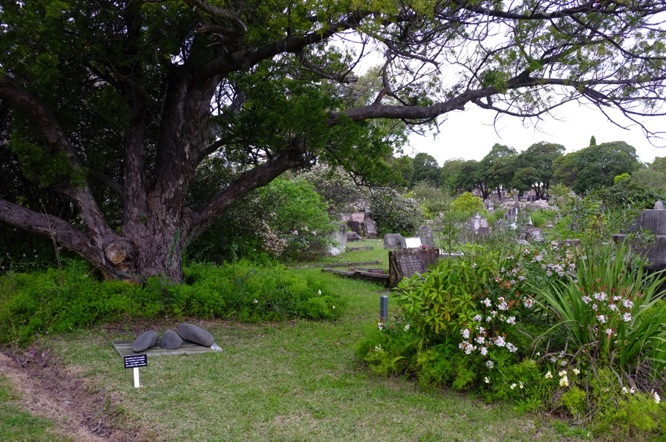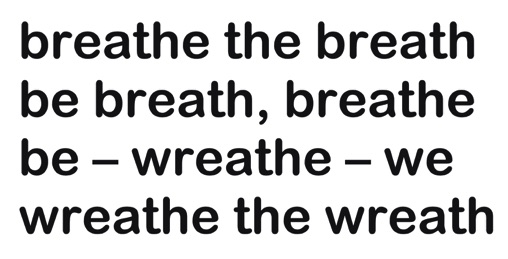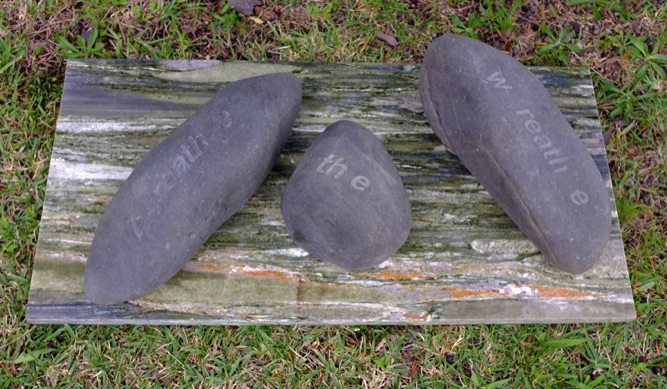
B reath e - W reath e Installed at Rookwood Cemetery, Sydney, for Hidden, 2016. Now in the collection of Heide MoMA, Melbourne. With engraved sign showing the poem sequence as below:
B reath e - W reath e, 2016 Sea stones on a marble base.



Breathe is a one-word poem, embodied in natural stones. The word breathe is separated into three parts, by the imposition of two spaces, becoming: b reath e. This word contains 'be' and 'breathe' and 'breathe' and 'the'. The poem becomes: Be Breath, Breathe, Breathe The Breath. The central part of the word 'reath' sounds the same as 'wreath'. This creates a second sequence, a resonanting echo: We Wreathe The Wreath. So breath and wreath become interleaved. Our life is breathing, until our last breath brings death. And then the wreath, with a circle representing eternal life and symbolising both mourning and rememberance.
Richard Tipping 2016